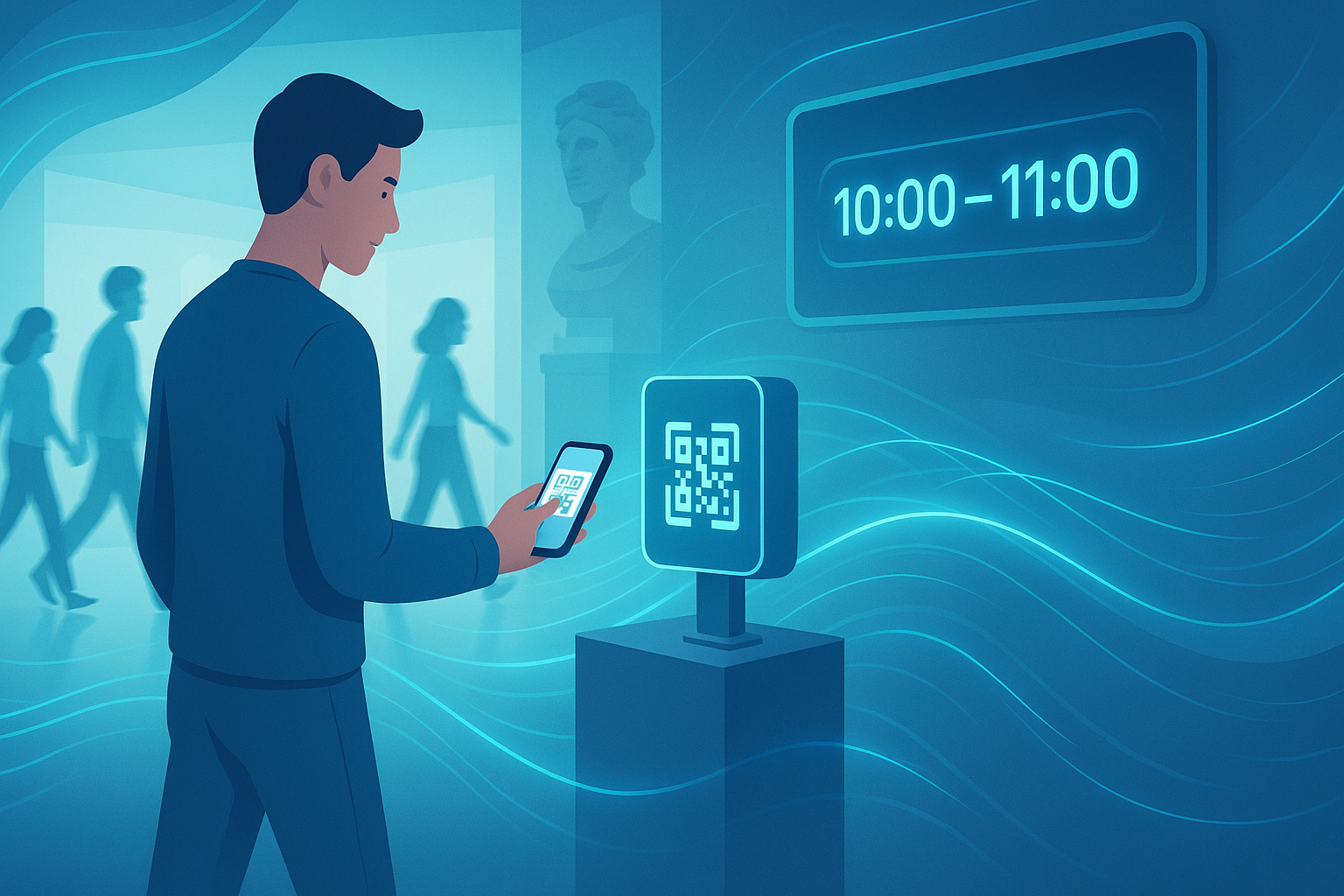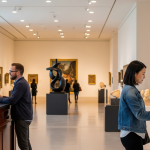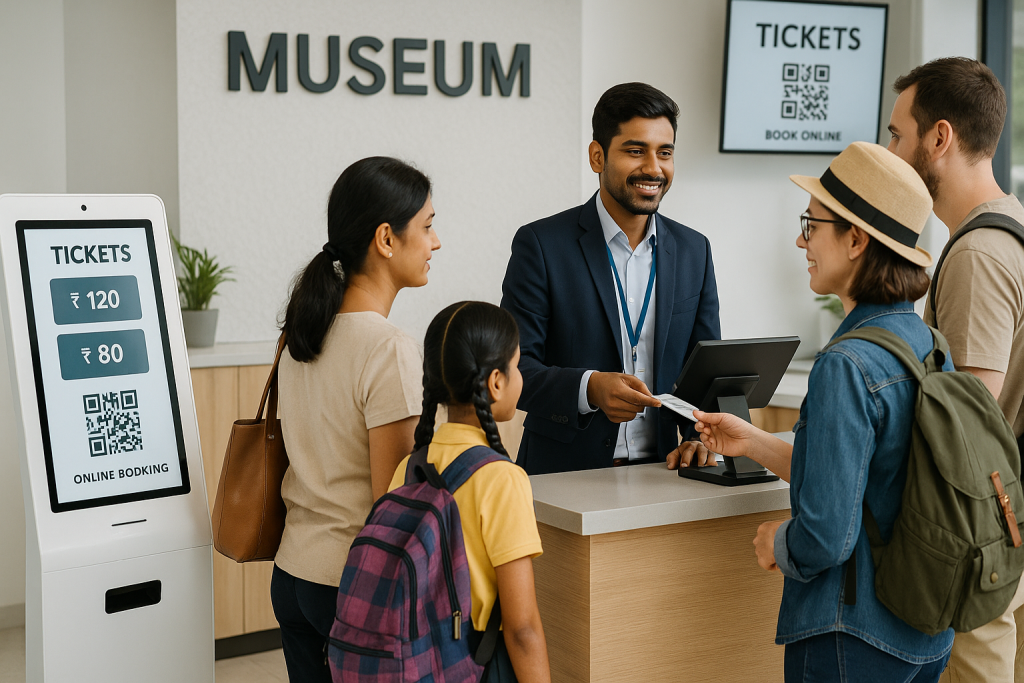Every museum wants visitors to enjoy a seamless cultural experience but long queues at the entrance often disrupt that journey. For institutions handling hundreds of guests daily, especially during peak hours, the result is the same: bottlenecks at entry points, frustrated visitors, and overworked staff.
This is where QR-based admissions are transforming how museums welcome their audiences. Instead of relying on paper tickets or manual checks, digital QR codes linked to timed slots give museums the ability to control visitor flow, reduce waiting times, and create smoother entry experiences.
In this blog, we’ll explore how timed slot entry combined with QR scanning eliminates bottlenecks, improves queue management, and helps museums deliver an uninterrupted, enjoyable visitor experience.
Why Do Museums Face Entry Bottlenecks During Timed Slots?
Even when museums adopt timed entry systems, bottlenecks at the gates remain a common frustration. Visitors often arrive in groups larger than expected, some arrive late or early for their slots, and manual ticket checks slow the flow even further.
These challenges cause long queues, uneven museum visitor flow, and a poor first impression. For institutions managing 500+ daily guests, peak hours can create overwhelming crowd pressure, leaving staff struggling with queue management.
Traditional paper tickets and barcode scanners aren’t fast enough to handle sudden surges. Without the right entry management technology, even a well-planned timed slot entry system can break down, leading to frustrated visitors and operational stress.
That’s why museums are actively looking for smarter, digital-first queue management solutions that truly align with the concept of timed admissions.
How Does Timed Slot Entry Improve Museum Visitor Flow?
Timed entry is designed to spread visitor arrivals evenly throughout the day, preventing overcrowding during peak hours. Instead of everyone entering at once, guests are allocated timed slots that limit how many people can access exhibits within a specific period.
When implemented correctly, this approach improves museum visitor flow by:
- Reducing congestion at entry points.
- Balancing crowd distribution across galleries and exhibits.
- Creating smoother event entry with predictable visitor numbers.
- Enhancing visitor experience by avoiding overcrowded halls.
However, the effectiveness of timed slot entry depends heavily on the admissions system used. Manual checks or traditional tickets often create new bottlenecks instead of solving old ones. This is why museums are exploring QR code event entry and digital event ticketing as smarter ways to enforce slot-based crowd management.
With the right technology, timed entry shifts from a scheduling concept into a powerful queue management solution that keeps visitor experiences smooth from the moment they arrive.
How Do QR-Based Admissions Work for Timed Slot Entry?
A QR-based admission system simplifies the entire check-in process for both visitors and staff. Instead of printing paper tickets or waiting in long queues, guests receive a QR code ticket as soon as they book their timed slot online. Here’s how it works step by step:
- Booking a slot online – Visitors choose their preferred time window and complete the booking.
- Receiving a digital QR ticket – A unique QR code is sent instantly via email or mobile app.
- Quick QR code check-in – At the museum entrance, guests scan their QR codes using handheld or kiosk scanners.
- Real-time admissions tracking – The system validates the ticket, logs the entry, and updates capacity instantly.
This process eliminates the need for physical tickets, speeds up entry, and ensures every guest is checked in according to their timed slot entry.
For a museum handling 500+ daily visitors, QR scanning for events distributes arrivals evenly, prevents overcrowding, and reduces operational pressure on staff. More importantly, it enables event flow optimization by giving administrators real-time insights into who has checked in and how visitor traffic is moving across time slots.
With QR-based admissions, museums shift from reactive crowd control to proactive event access management, creating smoother, smarter admissions for every guest.
What Are the Key Benefits of QR-Based Admissions for Museums?
For museums managing hundreds of visitors daily, the switch to QR-based admissions delivers both immediate and long-term advantages. Beyond faster check-ins, it transforms the entire visitor journey and staff operations.
Here are the most impactful benefits:
- Reduce entry bottlenecks – QR scanning is instant, cutting down the time each visitor spends at the gate compared to manual ticket validation.
- Smooth event entry – Guests skip long queues, enter seamlessly, and start their visit without delays.
- Ticketless event entry – Digital-first, eco-friendly admissions reduce paper usage while keeping the process efficient.
- Queue management solutions – By linking QR codes with timed slot entry, museums can evenly distribute foot traffic and prevent crowding at peak times.
- Event access management – Each QR code is unique, ensuring secure, one-time use and eliminating duplicate or fraudulent entries.
- Real-time admissions tracking – Staff gain live insights into visitor numbers, enabling better resource allocation and proactive crowd monitoring.
- Event flow optimization – Visitor data helps identify peak traffic times and improve planning for future events.
By combining QR code ticketing with entry management technology, museums achieve not just operational efficiency but also higher visitor satisfaction. A smooth first impression at the gate sets the tone for a memorable cultural experience inside.
How Can Museums with 500+ Visitors Daily Reduce Wait Times Using QR Code Check-In?
Imagine a mid-sized museum that welcomes over 500 guests every day. Before adopting QR-based admissions, visitors often faced:
- 20+ minute waits at peak hours.
- Overlapping time slots that created overcrowding at exhibits.
- Staff struggling to manage visitor flow manually.
After implementing a QR code check-in system with timed slot entry, the results were immediate:
- 60% reduction in wait times – QR scanning processed guests in seconds.
- Evenly distributed visitor flow – Each time slot managed predictable group sizes.
- Improved staff efficiency – Real-time admissions tracking helped allocate staff where needed.
- Stronger visitor satisfaction – Guests spent more time enjoying exhibitions instead of standing in line.
By combining QR code visitor management with event flow optimization, the museum turned a recurring operational challenge into a seamless experience.
This case demonstrates how queue management solutions powered by digital event ticketing don’t just solve entry issues, they also elevate the overall museum experience.
Why Is EveryTicket the Right Smart Admission Solution for Museums?
For museums seeking a reliable way to handle high visitor volumes, EveryTicket offers a purpose-built smart admissions solution. Its platform combines QR-based ticketing, timed slot entry, and real-time admissions tracking to streamline the entire entry process.
With EveryTicket, museums can:
- Enable QR code event entry for faster check-ins.
- Automate QR code visitor management and prevent duplicate entries.
- Use built-in digital event ticketing and CRM tools for better engagement.
- Access actionable data to support event flow optimization and staffing decisions.
Designed specifically for cultural institutions, EveryTicket ensures a smooth event entry experience while helping staff manage crowd flow with ease.
How Can Museums Get Started with QR-Based Admissions?
The shift to QR-based admissions is more than a convenience, it’s a strategic move to reduce entry bottlenecks, improve museum visitor flow, and create a smoother first impression for every guest. For institutions handling 500+ visitors daily, the impact is immediate: shorter queues, happier audiences, and more efficient staff operations.
With EveryTicket, museums can transform admissions into a seamless, data-driven process.
Fill the Inquiry form to book a free demo and reimagine how your museum manages visitor entry.



